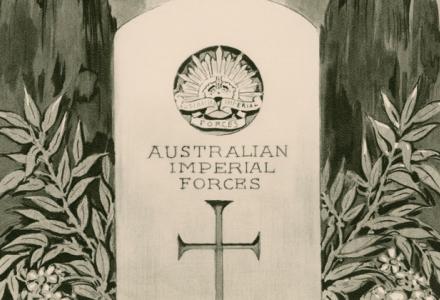Allan Whittaker, a waiter from Yarraville Victoria, was one of the first to enlist, one of the first to fight on Gallipoli and one of the first to be wounded. On the morning of the Landing, a Turkish bullet ploughed through his left foot. Evacuated from the beaches Allan Whittaker’s war was over. In one sense at least.
Returning home on the hospital ship Hororata, Whittaker was hailed as a hero. A massive crowd greeted the vessel as it sailed into Port Melbourne, singing, cheering and waving. Sick, pale and injured men were welcomed by a sign reading ‘Australia is Proud of You’. They were led through a welcome arch of gum leaves and wattle blossom.
Australia may well have been proud of its wounded veterans, but providing for them was quite another matter. Whittaker’s pension was half the living wage and as his wounds healed that allowance was halved and halved again.
Whittaker took on work at the wharf, a challenge for a fit man, let alone an injured one. Like a generation promised a land fit for heroes, he faced debt and hardship and poverty instead.
In 1928, on the eve of the Great Depression, Melbourne’s wharfies went on strike. A staunch union man, Alan Whittaker joined them. Employers vowed to break the labour movement and pay a desperate, casualised workforce a fraction of a living wage. Strike-breakers were brought in and police, armed with guns and brandishing batons, lined the wharf to protect them. Tempers rose, fighting broke out, and a nervous inspector ordered his men to fire
first into the air, then into the crowd.
Some police refused to do so.
Allan Whittaker had survived the withering fire of Gallipoli. But a shot fired by a fellow Australian killed him. That and the conditions he’d endured both in the trenches and then back home in Australia. Whittaker’s teeth reflected the poor diet of frontline soldiers: monotonous meals of hard tack biscuits, bully beef and jam. A similar diet was the lot of most men working the wharves. When he was carried into hospital doctors described his teeth as ‘filthy’ and decayed. They infected the wound at the back of his neck, spreading poison through his body. It would take Allan Whittaker three months to die.
The remains of Allan Whittaker were interred in Fawkner Cemetery.
The union turned out to bury their own. The eulogy that day reminded onlookers that Allan Whittaker had fought for his country but the debt owed to a veteran didn't extend to the right to work or to provide for a family or to a decent living wage. By the height of the Great Depression around a third of Australia’s returned men had joined the dole queues.
Whittaker’s story reminds us of the plight faced by many returned men. Whilst Australia’s repatriation system was more generous than many other countries it fell well short of addressing the needs of injured and needy men. And it reminds us that long after the armistice was signed a class war continued. For many surviving the war proved less difficult than surviving the peace.
For full attribution of sources, suggestions for further reading and an extended version of the story itself see ‘A shot fired by a fellow Australian: Allan Whittaker’ in Bruce Scates, Rebecca Wheatley and Laura James, World War One: A History in 100 stories (Melbourne, Penguin/Viking, 2015) pp. 85-88; 356.



